In recent years, Iran has made major breakthroughs in its defense sector and attained self-sufficiency in producing key military hardware and systems.
By attaining self-sufficiency and producing new achievements, which have been acknowledged by international experts, Iran has so far designed and manufactured different domestically developed missiles, radars, satellites, drones, tanks, aircrafts, destroyers, etc.
The Islamic Republic has also conducted military drills to enhance the defense capabilities of its military and to test modern military tactics and equipment, including Beit-ul-Muqaddas 27, Beit ul-Muqaddas 28, and Great Prophet.
Iran’s military show has provoked enemies to condemn its self-sufficiency, military power and achievements as a threat to the world, especially the region.
The Islamic Republic of Iran has repeatedly assured other nations, especially regional neighbors, that its military might poses no threat to other countries, stating that its defense doctrine is merely based on deterrence.
Ayatollah Khamenei has issued a fatwa (religious decree) on prohibition of weapons of mass destruction. He has on many occasions stressed that the production, stockpiling and use of nuclear weapons is Haram (religiously forbidden) and the Islamic Republic considers the pursuit and possession of nuclear weapons as a great sin.
Iranian Defense Minister Hossein Dehghan has hailed Iran’s defense sector, adding in spite of the sanctions against defense sector, the armed forces have foiled enemies’ intentions and objectives by attaining self-sufficiency and producing new achievements, and will do the same in the future.
The threats of military action by the US and its ally, Israel, against Iran, as well as the illegal unilateral sanctions by Washington and the European Union are based on the allegation that Iran's nuclear energy program pursues military purposes, a claim Iran has categorically rejected.
Dehghan has reiterated that the Islamic Republic needs no permission from anyone to boost its military and missile capabilities. “We will decisively follow our defense program objectives and expand our missile capabilities.”
Leader of the Islamic Revolution Ayatollah Seyyed Ali Khamenei addressing a meeting of government officials including President Rouhani on August 24, said enemies of Iran are strongly opposed to Iran's military and defense capabilities and make every effort to prevent its growth.
Iran, as a country living in the most unstable and volatile region of the world, is fully entitled to build a credible conventional capability to deter and defend against any aggression.
Iran’s military achievements aim to fully repel any enemy threat. Israeli officials have repeatedly talked of a military strike against Iran, however, the regime’s top commanders have opposed such action warning against the repercussions of a war with the Islamic Republic.
Over the past 37 years after the Islamic Revolution, Iranian military defense industry has always been progressing, producing new achievements in the field of defense capabilities; various sectors of the Iranian Revolutionary Guards, the Islamic Army and Iran’s Department of Defense despite tough sanctions, have relied on domestic power, talents and capacities to design, manufacture and test modern and advanced equipment, with missile tests, unveiling of defense systems, aircraft launch, express boats production with higher speeds, producing modern weapons and making numerous ships are only a few kinds of Iran’s capabilities in the field of defense.
Scientists and experts of Defense Ministry and Armed Forces of the Islamic Republic of Iran have brought about important and valuable achievement for the Iranian nation. Through the production of critical military projects and satellite launch, the country has been freed from dependence on western countries; delivery of 20 helicopters, cruise missiles, drones, satellite are among the most important achievements of the organization.
The following presents some of the new military-defense systems and equipment Iranian experts have achieved so far:
Missiles and air defense missile systems
Nowadays along with other technologies, missile technology adds strength to the country's armed services. At present of technological advancements, every country which has a well-known military power, is trying to enhance its missile technology because it becomes a real important tool in modern confrontations.
While talking about missile technology developments in The Middle East, Iran is one of the leading countries in that perspective which has the complete missile systems.
Here is the list of some important missiles of Iran's military system:
Missiles
Emad
Emad is a liquid-fuel, intermediate-range ballistic missile (IRBM) with a claimed range of 1,700 km and 750 kg payload. It was first unveiled in 2015. With an advanced guidance and control system in its nose cone, the missile's accuracy is reported to be around 500 meters. The missile is capable of striking targets with great precision.

Qadr
Qadr (sometimes referred as the Ghadr) is the most advanced Iranian liquid-propellant medium range ballistic missile which has more than 2000 km range, about 100 m CEP and carries a single 700 - 1000 kg warhead.
Talash
Talash missile defense system is a long- and medium-range system with a domestic missile capability designed and manufactured by the Ministry of Defense and Armed Forces Logistics (MODAFL). It is synced up with the Iranian air defense missiles, Sayyad 2 and 3.
Bavar 373
Bavar-373 is a long-range mobile air defense system which uses a phased array radar like Russian 96L6 for tracking aerodynamic targets and ballistic missiles in medium to long ranges, mounted on the ZAFAR heavy truck.
Mersad
Mersad is an Iranian advanced low to mid range Air defense system developed in 2010. It fires Shahin (Falcon) missiles which are reverse engineered, domestically upgraded versions of the American MIM-23 Hawk Surface-to-air missiles. It uses a series of domestically produced radars and Electronic devices.
Sayyad
Sayyad (Hunter) is a mid-range, high altitude solid-fuel missile and can destroy different types of helicopters, drones and targets with small radar cross-section and high speed and maneuverability within its operational range.
Radars
Ghadir
The Ghadir radar system has been designed to identify aerial targets, radar-evading aircrafts, cruise missiles and ballistic missiles as well as low-altitude satellites. It is equipped with over 100 antennas which are capable of 360 degree rotation. The Ghadir radar system is capable of discovering and tracking planes from a 600-kilometer distance and ballistic missiles from a distance of 1,100 kilometers; it detects objects at an altitude of up to 100 kilometers.
Fath 14
Fath 14 is a state-of-the-art long-range radar system domestically produced to be attached to missile systems and is capable of discovering hostile aircraft or drones. It covers areas 600km in range and is capable of tracking small flying objects in high altitudes.

Bidar
Bidar is a surveillance and intelligence analyst system and its main characteristic is that it is untraceable.
Nazir
Nazir is a long-range and high-precision radar system capable of detecting targets with its low cross section ability. The system is protected against anti-radar missiles and enjoys the ability to detect targets at ranges in excess of 800 km and a height of 100 feet.
Bina
Bina is a 3D high-resolution control radar which has great ability in detection and identification of potential targets with low radar cross section, and can fully fight against electronic warfare while also detecting stealth targets.
Kashef
Kashef is a series of Iranian early warning radars developed by SAIRAN. Currently there are two versions in service, Kashef 1 and Kashef 2. Kashef 1 is a 2D radar operates in S-Band and has a range of 150 km. Kashef 2 is externally very different from Kashef 1. It uses a different net-like antenna that can be split in 3 parts to reduce the time needed for setup and breakdown. The range is 200 km and the maximum number of targets it can track simultaneously is increased to 1000. It uses 30 kW of power.
Aircraft and Helicopters
Ghaher-313
It is a single-seat stealth fighter and multi-role combat aircraft that was publicly announced in 2013.
Saegheh 2
It is a twin-seat fighter jet, which has more power, mobility, navigation equipment, fire power, pay load and operational range compared to its single-seat version.
Panha 2091
Panha or Toufan is an Iranian overhaul and upgrade of the Bell AH-1J International (export version of the SeaCobra) light-attack helicopters.

Armored Vehicles
Zulfiqar MBT
Zulfiqar is an Iranian main battle tank (MBT) and has a distinctive box-shaped, steel-welded turret of local design. It has three variants; the Zulfiqar-3 is the most advanced variant of the Zulfiqar family. It features considerable upgrades to the fire control system, chassis, engine and main gun. The new variant is equipped with the 2A46 125 mm smoothbore cannon with an autoloader, a laser rangefinder and a new fire control system.
Rakhsh
It is a lightweight 4x4 cross-country APC developed and produced by DIO's Shahid Kolah Dooz Industrial Complex and named after Rakhsh, the mythical horse of Rostam in Shahnama. It is in service of Iranian Police, Iranian Army, IRGC and Sudan.
Cobra BMT-2
It is an Iranian armored personnel carrier armed with a 30 mm autocannon or a ZU-23-2 anti-aircraft gun.
Tosan
It is an Iranian light tank for unconventional warfare and can drive long distances on its tracks and does not need to be carried on trucks.
UAV
Tehran has gained a lot of experience in making drones after the country first used the aircraft for military use. The Islamic Republic has so far unveiled various domestically produced drones, including Ababil, Fotros, Hazem, Karrar (long range attack drone), Mohajer, Sarir, Shahed 129, Yasir and Zohal. Iran unveiled its first domestically manufactured long-range UAV named Karrar in 2010. The first Iranian medium-altitude long-endurance UAV, the Shahed-129 was unveiled in September 2012, which is capable of carrying out combat and reconnaissance eight missions for 24 hours and has a range of 1,700 km.
Ababil
The Ababil, much smaller than manned airplanes, is a domestically-manufactured naval surveillance plane. Ababil-5 is for medium-range reconnaissance and surveillance missions and the Ababil-T is designed for short, medium-range attack missions.
Karrar
It is the first long-range unmanned aerial drone manufactured in Iran and single-use drone which has a range of about 600 miles.
Toofan
Toofan is an Iranian UAV which has been developed to find and destroy the enemies through optical explorer. In this type of mission, the UAV is designed for battle and with small dimensions, it could approach to the enemy without being detected and its high speed makes nay reaction extremely difficult.
Mohajer 4
Mohajer 4 was manufactured for air surveillance and target identification from 150Km distance. It may be capable of guiding laser-guided munitions to their targets. Its fuselage is redesigned and features low mounted trapezoid shaped wings with upward-canted wingtips to lessen the drag. Operational range of the drone is almost double of the older versions.
Shahed 129
It is a UCAV with 24-hour flight capability and armed with Sadid missiles. It is capable of carrying out combat and reconnaissance missions with an endurance of 24 hours, making it the first Iranian MALE UAV.
Dorna
Dorna with maximum speed of 220KMph in 3300m altitude is the second generation of Mohajer-2 with the intention of improving range and flight endurance.
Roham
Roham can receive photogrammetry (mapping from aerial photographs) data, fly and hover over sea or mountainous and forested areas, land on and take off from any location, monitor a specific target at low altitudes and patrol an area at a high speed.
Hodhod 3
Hodhod 3 is an unmanned multi-rotor which is capable of operating without a band. It can fly for 53 minutes non-stop and create less noise, and can be easily repaired as well. The drone is 12 KG heavy and the vertical flight drone can move carrying consignment up to 3 kg, and can be used for emergency such as carrying scorpion and snake bites serums.
Mohajem 92
Mohajem 92 is a drone that has a range of 500 kilometers (310 miles) with a maximum speed of 200 kph (125 mph). It was manufactured by the self-sufficiency department of the Islamic Republic Air Force.
Fotros
Fotros is a drone with a range of 2,000 km and can remain aloft for between 16 and 30 hours. Fotros can carry missiles for air-to-ground attacks. In theory, this makes the Fotros roughly equivalent to the drones that the US.
These are only a few instances of showing Iran's defense and military achievements.
Iran's progress in military arena has sparked concerns and criticisms from its enemies, most notably the US, in the world and the region.
The United States is concerned about Iran’s increasing missile power and tries to use it as a pretext to undermine the Iranian Establishment which is mostly flimsy and legally worthless, however, indicative of Westerners long-term policy which shows they do not want the Islamic Republic to be powerful enough to ensure regional security.
They have increasingly imposed economic sanctions against Iran's Armed Forces since the end of Iraqi imposed war on Iran in 1988, to undermine Iran’s military strength and defense achievements.
However, as Iranian commanders, defense minister, president and many high-ranking officials comment, every achievement unveiled in Iran’s military system is for the stability, security and peace in the region.
Iran definitely enjoys the right to defend against any outside threat and for this purpose operates within the international law which indicates no flying target is allowed to invade Iranian air space.
Iranian officials have repeatedly underlined that the country's missile program and defense capabilities of the Islamic Republic of Iran are not negotiable with any country, under any circumstance.
Iranian Foreign Minister Mohammad Javad Zarif has underlined that Iran's missile tests did not violate the nuclear agreement, known as the Joint Comprehensive Plan of Action (JCPOA), clinched by Iran and the 5+1 countries on July 14, 2015.
Accordingly, Iran's missile launches have never been against the UN Security Council Resolution 2231 that endorsed the nuclear agreement. Resolution 2231 (2015) provides for the termination of the provisions of previous Security Council resolutions on the Iranian nuclear program and establishes specific restrictions that apply to all states without exception.
The resolution calls upon Iran not to undertake any activity related to ballistic missiles designed to be capable of delivering nuclear weapons, including launches using such ballistic missile technology. It does not prohibit legitimate and conventional military activities, nor does international law disallow them, Iranian Foreign Minister Zarif has reiterated.
Iran has never sought to acquire nuclear weapon and never will in the future, as it fully honors its commitment under the NPT and the JCPOA. Iran will continue with its defense capabilities and that these defense capabilities have nothing to do with nuclear weapons.



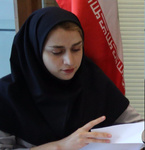

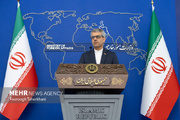


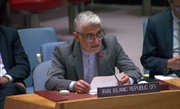
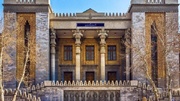



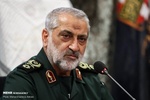









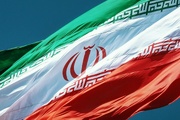

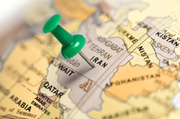
Your Comment